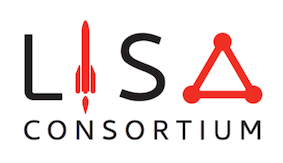Speaker
Description
In $\sim$2034 the Laser Interferometer Space Antenna (LISA) will detect the coalescence of massive black hole binaries (MBHBs) from $10^4$ to $10^7 \, \rm M_{\odot}$ up to $z\sim20$. The gravitational wave (GWs) signal is expected to be accompanied by a powerful electromagnetic (EM) counterpart, from radio to X-ray, generated by the gas accreting on the binary.
GWs are standard sirens (StSis) since they carry the direct information of the luminosity distance of the source. If an EM counterpart is present, the galaxy hosting the merger can be identified and the redshift can be determined with follow-up observations, opening the possibility to test the expansion rate of the Universe.
In this talk, I will present the recent LISA forecasts to constrain cosmological parameters with multi-messenger observations of MBHBs.

